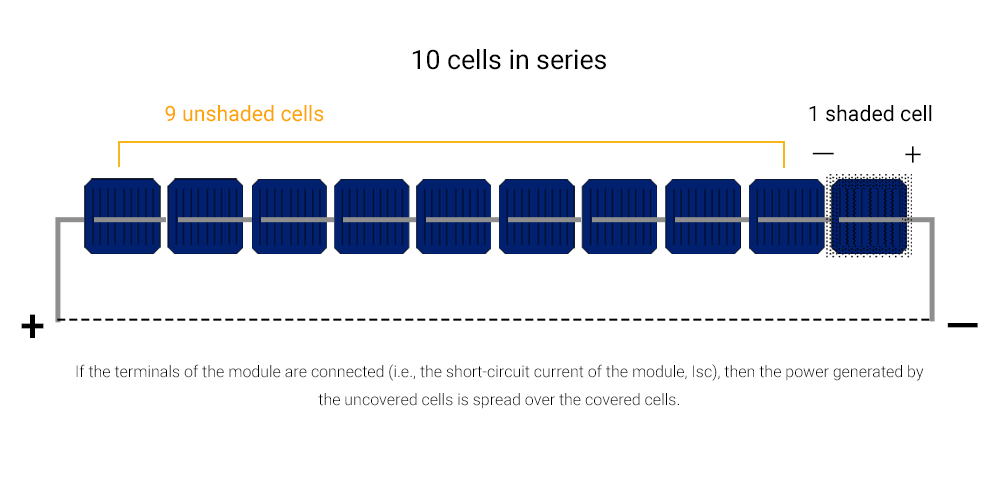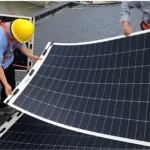As solar technology continues to advance, solar panels play an increasingly important role in the global energy transition. However, during actual operation, solar panels may encounter a significant issue known as the hotspot effect. Hotspots not only impact the energy production efficiency of solar systems but can also cause long-term damage to solar panels. Therefore, understanding the causes of hotspots and the application of Anti-Hotspot technology is essential for improving solar panel performance and extending their lifespan.
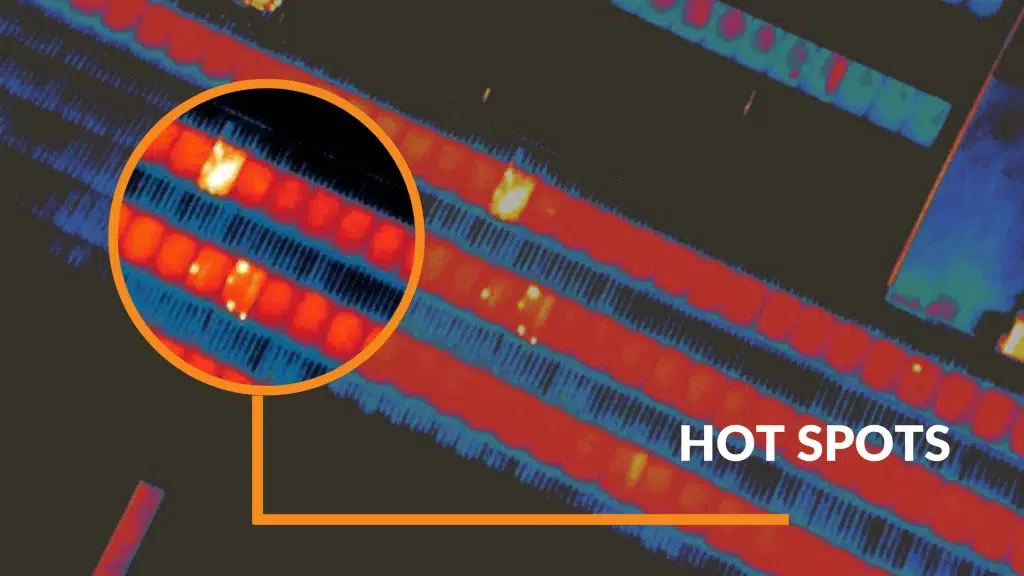
What is the Hotspot Effect in Solar Panels?
Under ideal conditions, solar panels convert sunlight into electricity, with all solar cells operating efficiently. However, when certain solar cells fail to receive adequate sunlight exposure, or when shading occurs, these cells may no longer generate electricity and instead absorb current, which generates heat. This phenomenon results in localized hot spots, which can reduce the overall power output of the entire panel. Over time, these hot spots can lead to permanent damage to the solar cells and reduce the panel’s lifespan.
Causes of the Hotspot Effect on Solar Panels
Several factors can contribute to the formation of hotspots in solar panels:
- Shading: When parts of the solar panel are shaded due to obstacles like buildings or trees, the shaded cells no longer generate electricity, causing them to absorb current and overheat. This can lead to hotspots that reduce the overall efficiency of the system.
- Soiling: Dust, dirt, or bird droppings on the surface of the solar panel can block sunlight from reaching certain cells. The affected cells will overheat as they fail to produce energy and instead draw current.
- Manufacturing Defects: Imperfections in the manufacturing process can cause certain cells to be less efficient or malfunction, leading to overheating of those cells and the formation of hotspots.
- Module Mismatch: Variations in the performance of individual cells within a panel can cause mismatches, where weaker cells absorb more current and generate heat, leading to hotspots.
- Poor Quality Control: Solar panels with inadequate quality control may have weak soldering, wiring, or internal connections that can lead to hotspots.
Anti-Hotspot Technology: Techniques and Solutions
To mitigate the effects of hotspots, solar manufacturers have developed several innovative techniques to incorporate Anti-Hotspot features into their panels. These technologies aim to reduce the occurrence of hotspots and improve the overall efficiency and reliability of the system.
Bypass Diodes
Bypass diodes are a critical component in solar panels with Anti-Hotspot technology. These diodes are strategically placed within the panel’s design to divert current around shaded or underperforming cells. When certain cells are not generating power, the schottky diodes allow the current to bypass them, preventing localized heating and ensuring that the rest of the panel operates optimally.
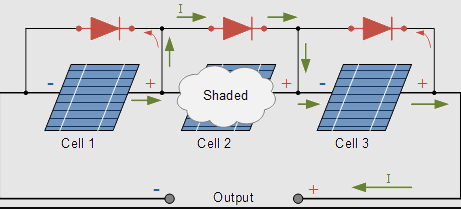
Cell Interconnection Design
The design of the interconnections between cells is crucial in preventing hotspots. Advanced cell interconnection technologies are used to evenly distribute current across the entire panel, reducing temperature variations and ensuring that energy production is consistent across all cells.
Thermal Management
Thermal management techniques, such as heat sinks and passive cooling systems, are integrated into the solar panel’s structure to dissipate heat effectively. By controlling the temperature within the panel, these systems reduce the likelihood of hotspots forming, ensuring the panel operates within the desired temperature range.
Advanced Materials
The selection of high-quality materials plays a key role in preventing hotspots. Manufacturers use materials with improved thermal conductivity and durability to enhance the overall thermal performance of solar panels, reducing the risk of hotspots.
Sungold Anti-Hotspot Effect Technology
Sungold’s Anti-Shade Technology effectively reduces the hotspot effect caused by localized shading factors such as fallen leaves, bird droppings, sand, and dust. This technology ensures maximum output under various weather conditions, even when solar panels are partially shaded. By mitigating the impact of such factors, Sungold guarantees consistent performance and optimal energy generation in all scenarios.
Sungold solar panels include both flexible and rigid models, designed to meet the diverse needs of different applications, from residential rooftops to commercial setups. Currently, this technology is integrated into all Sungold products.
Technological Advantages
- Anti-Hotspot Technology: Sungold’s solar panels employ precise technologies to resolve hotspot issues, ensuring that the modules maintain optimal performance under various environmental conditions.
- Unit-Level Shading Management: Sungold’s Anti-Shade Technology enables continued power generation even under partial shading, unlike traditional panels that stop producing electricity completely under similar conditions.
- Reduced Hotspots: The new design minimizes micro-cracking issues caused by hotspots, which helps to extend the lifespan of the panels and improve overall reliability.
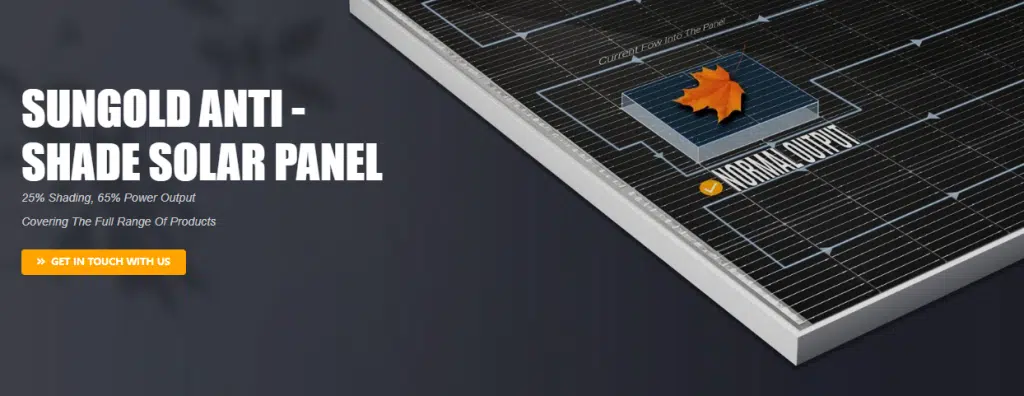
Benefits of Anti-Hotspot Technology
Anti-hotspot technology offers several key benefits that improve the performance and longevity of solar panels:
Enhanced Energy Production
By preventing the formation of hotspots, Anti-Hotspot technology ensures that solar panels operate at their maximum efficiency. This leads to greater energy production, making it especially beneficial for residential, commercial, and utility-scale solar installations.
Extended Panel Lifespan
Hotspots can cause permanent damage to solar cells over time, reducing the lifespan of the entire panel. Anti-hotspot features help protect the cells and extend the panel’s operational life, which is essential for reducing maintenance costs and improving the return on investment.
Improved Reliability
Solar panels equipped with Anti-Hotspot technology are more reliable and durable. They are better equipped to withstand harsh environmental conditions, including extreme temperatures and shading, ensuring long-term consistent performance.
Enhanced Safety
Hotspots not only affect the performance of solar panels but can also pose significant safety risks, including the potential for fires. By preventing overheating, Anti-Hotspot technology helps mitigate these risks and enhances the overall safety of the solar system.
How to Verify if a Solar Panel Has Anti-Hotspot Technology
To verify whether a solar panel is equipped with Anti-Hotspot technology, follow these steps:
- Check Manufacturer Specifications: Review the technical documentation or datasheets provided by the solar panel manufacturer. Look for mentions of Anti-Hotspot technology or any related features like bypass diodes or temperature management systems.
- Consult Suppliers: Contact reputable solar panel suppliers or manufacturers and inquire directly about which models incorporate Anti-Hotspot technology.
- Independent Testing: If needed, consider independent testing to verify the effectiveness of Anti-Hotspot technology. Third-party testing organizations can assess the presence and performance of this feature.
- Research Online Reviews: Explore online forums, industry publications, and user reviews to gather feedback from other professionals in the solar industry about specific panel models and their Anti-Hotspot features.
Conclusion
The Hotspot Effect is a serious issue that can decrease the performance and lifespan of solar panels. However, with the integration of Anti-Hotspot technology, solar panels can avoid the detrimental effects of hotspots and continue to operate efficiently. Whether through bypass diodes, advanced materials, or innovative thermal management solutions, Anti-Hotspot technology ensures that solar panels perform at their best, providing long-term reliability, safety, and cost-effectiveness for both residential and commercial installations.


